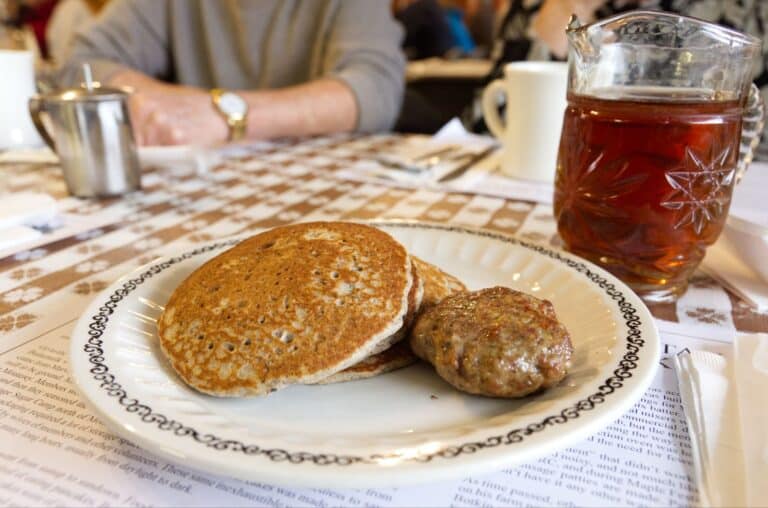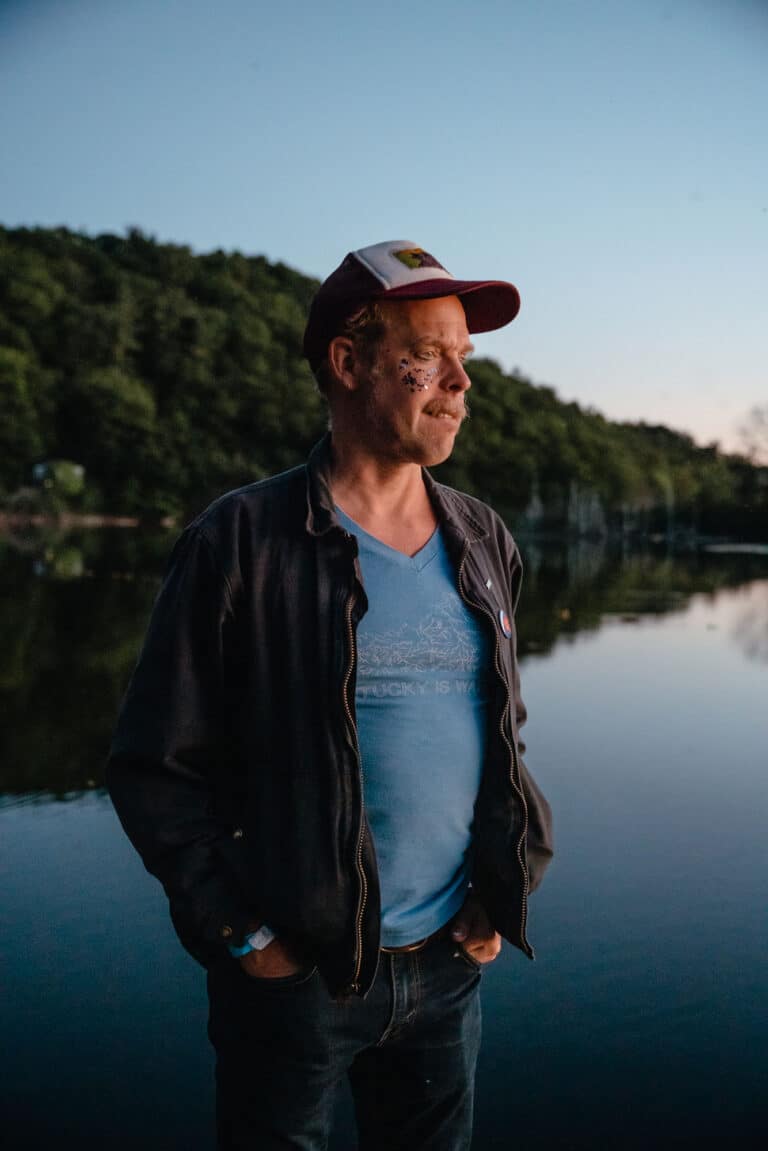With miles of hiking, biking, and paddling, the Kentucky national park has much more than cave tours.
We were towing our camper along a winding rural road when a horsedrawn wagon appeared in the opposite lane. I waved at an Amish family riding in the sun. Three friendly generations—five kids, two parents, and one grandmother—waved back. A perfect start for our first trip to an unfamiliar region.
My wife and I were in between everywhere familiar: East of the Ozarks, south of Brown County, west of the Cumberland Plateau, and north of Chattanooga. A part of Kentucky called the Pennyroyal Plateau, known for rolling hills, karst topography, and famous caves. We’d heard about Mammoth Cave National Park for years but never went. Mostly because we plan trips around outdoor activities, with guided tours being an afterthought. But once we had our fiberglass travel trailer, I began to research quieter places to camp and explore.
A few details about Mammoth Cave caught my eye. While most of the modest 500,000 annual visitors head below ground during a day trip, there are 82 square miles of rugged surface that seem almost forgotten. Opportunities include far more than just hiking and camping. There’s river paddling, gravel cycling, and two purpose-built mountain biking loops. There’s also a microbrewery in nearby Bowling Green. It sure sounded like a national park worth checking out. So last May on a monthlong road trip, we decided to swing by.
Front Country Hiking, Cycling, & Camping
The winding Mammoth Cave Parkway led us through a particularly lush forest. Located in a transitional zone between ecosystems, the park’s trees are a mix of Midwestern hardwoods like oak and hickory and Southeastern species like tulip poplar, red cedar, and Virginia pine.
Occasionally appearing alongside the road was the Mammoth Cave Railroad Bike and Hike Trail, which roughly follows the route of a tourist train that operated from 1886 to 1931. Today, nine miles have been converted to a gravel rail trail. The wooded path stretches from nearby Park City to the visitor center, where a historic steam engine and passenger car are on display. I later found the trail to be a nice ride, with better hills than expected and a side-stroll around the boardwalk at Sloan Crossing Pond.
But first, we occupied our reserved site in the large Mammoth Cave Campground. It never filled, despite our four nights falling over the weekend before Memorial Day. Rain started that evening, so we had a quiet morning in the camper until the storm cleared. Then we set off from camp on a long hike.
A network of front-country hiking trails took us to some intriguing surface features. On the bluffs above the Green River, sink holes and natural entrances revealed how runoff from the recent rain flowed into the limestone caverns below. At the base of these bluffs, large springs re-issued this runoff in the form of streams like the River Styx and Echo River. It was a revealing primer for what we would encounter when we later ventured inside the caves.
Mountain Biking in a National Park?
Our second day was devoted to the mountain bike trails. We decided to ride the paved road from camp. This involved a fast and steep descent, with most of the 500-foot elevation change coming in the last mile down to the river. It was pretty fun to roll onto the deck of a two-car ferry and have the short crossing to ourselves. Less fun was climbing an equally steep paved road into the park backcountry.

As mountain bikers who also paddle and hike, it can be tough for us to find destinations with all three activities near campsites. When possible, not all opportunities are made equal, and most national parks are not known for singletrack biking. Because I wanted to see the entire trail system, we turned off toward Maple Springs Group Campground and rode to the official trailhead. My wife took one sweaty look at the empty parking lot and offered a constructive critique of my trip planning.
“Wait, we could have driven here?”
“But then we wouldn’t have discovered how difficult it is to bike here,” I countered.
A little over a mile on Maple Springs Trail led to the Big Hollow Trail system, which has about 11 miles of singletrack with 600 feet each of elevation gain and drop. We started with the easier North Loop, using a shortcut to ride sections in both directions. This was a well-made cross-country trail, fast and flowy along the bluff tops.

With the heat rising, my wife decided to skip the harder South Loop, offering a pointed reminder about the paved climb back to camp. I agreed to teach myself a lesson by riding at an exhausting pace for another hour before even attempting it. Other than a massive downed tree to work around, the one-mile connector was quick and mellow. The three-mile South Loop proved a bit more technical with some optional jumps and rocky sections to navigate. All told, a solid trail system.
While cooling off on the breezy downhill, I passed my kind of sign: “ROAD ENDS IN WATER 1 MILE AHEAD”
Paddling the Green River
Finding accurate info about paddling through the park was a challenge. One visitor center staffer told us to expect a current around “five knots,” equivalent to just under six mph. This would make Kentucky’s Green River one of the fastest in the world, possibly second only to the mighty Amazon. Another ranger said to expect solid class II-II+ water that borders on class III at higher levels. Meanwhile, a friendly family in the campground described a pleasant float stream that flows well. Regardless, the two officials rattled me enough to not only wear a PFD but bring a throw rope. We briefly considered, but ultimately skipped, helmets. Of course, the regulars were right.

It was a nice mellow run. The Dennison Ferry put-in involved steep steps, but it was manageable. Just downstream we paddled into a river-level cave. Continuing, we encountered occasional spring inflows and grassy islands. Frequent wildlife included two bald eagles, dozens of ducklings, and some very big turtles.
“Don’t shell shame the turtles,” my wife joked.
We took out above the ferry, locked our kayaks to a boat rack, and walked back to camp. I biked a hilly shuttle to retrieve the truck. When it came to moderate outdoor adventures, the park seemed on point.
A Fun Night out in Bowling Green, Kentucky
The college town of Bowling Green was a 30-minute drive, within striking distance for a memorable Saturday night. But when we walked inside what Google Maps claimed was White Squirrel Brewery, we weren’t so sure. The beer taps had no handles and sitting at the bar were five friendly regulars who seemed equally surprised upon our arrival. A young bartender explained that the brewery was preparing a new location. Then she told her regs to yell if they needed anything, and she joined us on the patio.
“Nice to have some new faces,” she said.

We talked about the region and the town and the wackiest character in the Pit Stop Bar & Grill. The tall fella eventually came outside, toting a large telescope that he frequently misplaced around town. He was a jack of all trades, including an actor and filmmaker. He had appeared in an episode of Breaking Bad before moving home to care for his ailing grandfather. Recently he completed a documentary about Hunter S. Thompson. It was a great night, and we’d probably still be there if we hadn’t had a cave tour reservation.
Later that fall, while passing through, I managed to stop by White Squirrel Brewery. The new taproom was now open inside the brewery warehouse. The beers were great, especially the pale ale and amber. During an interesting conversation at the bar, I learned that Bowling Green is debating its future. Some want it to become a smalltown Nashville, with a neon strip of country music bars. Others envision something like an Appalachian outdoor town, with greenway paths, hiking areas, and mountain bike trails. Time will tell what happens, but if the surface adventures above Mammoth Cave are any indication, the regional terrain could definitely support the latter.
Don’t Forget a Cave Tour
Between activities, we made sure to go inside Mammoth Cave. It’s the longest in the world, with 425 miles currently mapped and further extensions being discovered each year. Due to an impermeable cap rock, water inflows are limited to scattered sinkholes that feed underground streams. Otherwise, the cave is mostly dry, known for long passageways and vast chambers that formed over millions of years.

Guided tours are what most people come for, and these often sell out ahead of time. Thus, online reservations through Recreation.gov are strongly recommended. Tours range from short walks on paved paths to rugged hikes through undeveloped sections. Some rigorous excursions may appeal to more adventurous visitors. The toughest is the six-hour Wild Cave Tour, involving crawling through tight passages to reach remote areas.
Another active option is the Violet City Lantern Tour. Using only lantern light, you leave behind the developed chambers and follow dirt paths deep inside the underground labyrinth. For three hours, you explore three miles of caverns, switchbacks, historic sites, and underground waterfalls. Finally, you reemerge on the bright surface of this forested park. One that’s filled with hidden adventures, both above ground and below.
All photos by the author







